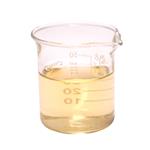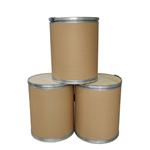- 2-Bromoethanol
-

- $0.00 / 1kg
-
2024-10-25
- CAS:540-51-2
- Min. Order: 1kg
- Purity: 0.99
- Supply Ability: 20 tons
- 2-Bromoethanol
-

- $1.50 / 1g
-
2023-07-27
- CAS:540-51-2
- Min. Order: 1g
- Purity: 99.0% Min
- Supply Ability: 100 Tons
- 2-Bromoethanol
-

- $0.00 / 25KG
-
2023-07-22
- CAS:540-51-2
- Min. Order: 1KG
- Purity: 99%
- Supply Ability: 50000KG/month
Related articles - The toxicity of 2-bromoethanol
- 2-Bromoethanol is a colorless or light yellow hygroscopic liquid with relatively stable and toxic chemical properties.
- Apr 11,2022
Question and answer - Q:How to synthesis 2-Bromoethanol
- A:2-Bromoethanol can be prepared by the reaction between ethylene glycol and hydrobromic acid and phosphorus tribromide, by the ....
- Aug 2,2024
|
| | 2-Bromoethanol Basic information | | Toxicity |
| | 2-Bromoethanol Chemical Properties |
| Melting point | -80 °C | | Boiling point | 56-57 °C/20 mmHg (lit.) | | density | 1.763 g/mL at 25 °C (lit.) | | vapor density | 4.3 (vs air) | | vapor pressure | 2.4 mm Hg ( 20 °C) | | refractive index | n20/D 1.492(lit.) | | Fp | >230 °F | | storage temp. | 2-8°C | | solubility | 1-5 g/100 mL at 19°C | | form | Liquid | | pka | 13.82±0.10(Predicted) | | color | Clear colorless to yellow | | Specific Gravity | 1.7629 (20/4℃) | | Water Solubility | 1-5 g/100 mL at 19 ºC | | Sensitive | Light Sensitive | | Merck | 14,3792 | | BRN | 878140 | | Stability: | Stable, but probably light sensitive. Hygroscopic. Incompatible with strong oxidizing agents. Flammable. Forms an azeotrope with water. | | InChIKey | LDLCZOVUSADOIV-UHFFFAOYSA-N | | CAS DataBase Reference | 540-51-2(CAS DataBase Reference) | | NIST Chemistry Reference | Ethanol, 2-bromo-(540-51-2) | | EPA Substance Registry System | 2-Bromoethanol (540-51-2) |
| | 2-Bromoethanol Usage And Synthesis |
| Toxicity | 2-Bromoethanol can damage human body. The invasive ways of 2-bromoethanol include inhalation, ingestion and percutaneous absorption. 2-Bromoethanol has strong irritation to mucosa, upper respiratory tract, eyes and skin. Inhalation of 2-bromoethanol can cause death due to spasm, inflammation and edema of larynx and bronchus, chemical pneumonia and pulmonary edema. The manifestations of 2-bromoethanol poisoning include burning sensation, cough, wheezing, laryngitis, shortness of breath, headache, nausea and vomiting. | | Description | 2-bromoethanol, a halogenated alipathic hydrocarbon, is a widely used industrial chemical. It is also a contaminant in food such as wheat and flour during treatment with ethylene oxide. 2-Bromoethanol was also found as a metabolite of 1,2-dibromoethane. A known carcinogen in experimental animals. 2-Bromoethanol is highly toxic in vivo and is a potent mutagen. Fatty acid conjugates of 2-bromoethanol that have been identified after 2-bromoethanol adminis�tration to rats may explain the long term 2-bromoethanol accumulation and retention in body tissues. Chronic exposure to 2-bromoethanol causes liver and kidney toxicity. 2- Bromoethanol also induces extensive lipid peroxidation in rat liver, kidney and testis slices and inhibits liver mitochondria respiration[1]. | | Chemical Properties | colourless liquid | | Chemical Properties | 2-Bromoethanol is a colorless or light yellow hygroscopic liquid with relatively stable and toxic chemical properties. It plays a role in industrial and chemical experiments. It shall be stored in a ventilated, low-temperature and dry warehouse and separated from oxidants, acids and food additives. It is miscible with water and forms an azeotrope with water. The boiling point is 99.1 ℃ (101.35kpa). The aqueous solution has a sweet burning taste. It can be miscible with most organic solvents such as ethanol and ether, but insoluble in petroleum ether. The hydrolysis of aqueous solution can be accelerated when it meets acid, alkali and heating. | | Uses |
2-Bromoethanol is used in selective reduction of nitroarenes (PcFe(II)/NaBH4/2-bromoethanol catalyst system). It is not used much forany commercial purpose. The risk of exposure to this compound arises when ethylene oxide reacts with hydrobromic acid. It is used as a solvent and organic synthetic raw material. 2-Bromoethanol finds application in the synthesis of 2-piperidin-1-yl-ethanol by reacting with piperidine.
| | General Description | Colorless to dark brown liquid. Sweet burning taste. | | Air & Water Reactions | Hygroscopic. Water soluble. | | Reactivity Profile | 2-Bromoethanol forms an azeotrope with water; hydrolysis of aqueous solutions is accelerated by heat, alkalis and acids. | | Hazard | Irritant to eyes and mucous membranes. | | Health Hazard | The vapors of ethylene bromohydrin are anirritant to the eyes and mucous membranes.It is corrosive to the skin. Ingestion of thiscompound can produce moderate to severetoxic effects. The target organs are the CNS,gastrointestinal tract, and liver. The lethaldose in mice by the intraperitoneal route was80 mg/kg.
Ethylene bromohydrin manifested car cinogenicity in test animals. It caused tumorsin lungs and the gastrointestinal tract in micefrom intraperitoneal (150 mg/kg/8 weeks)and oral (43 mg/kg/80 weeks) dosages,respectively. It is a mutagen, positive to thehistidine reversion–Ames test. | | Fire Hazard | 2-Bromoethanol is combustible. | | Safety Profile | Poison by
intraperitoneal route. Questionable
carcinogen with experimental neoplastigenic
and tumorigenic data. Mutation data
reported. When heated to decomposition it
emits toxic fumes of Br-. See also | | Synthesis | Ethylene gas is washed and passed into an ice-cold solution of 7.2 g of bromine in 500 ml water. After complete absorption of the bromine, a fresh portion of 7.2 g, equal to the first, is added, with frequent and vigorous agitation, until a total weight of 200 g of bromine has reacted. The lower layer of ethylene dibromide, formed during the process, is separated, washed with water, and dried over sodium sulfate. Yield, 88 g. After neutralizing with the sodium carbonate and saturating the aqueous layer with sodium chloride, the 2-bromoethanol is extracted by shaking twice with 100 ml of ether, dried over sodium sulfate; the ether is removed by evaporation yielding 85 g of bulk of the residual liquid, which distils between 145-149° C. 54.4% of the bromine is converted into 2-bromoethanol and 37.5% into ethylene dibromide. The remainder is found as hydrobromic acid.
| | Waste Disposal | Ethylene bromohydrin is mixed with a combustible solvent and burned in a chemicalincinerator. | | References |
[1] Sumsullah Khan, Peter J. O’Brien, Christian Sood. “The Involvement of Cytochrome P4502E1 in 2-Bromoethanol-Induced Hepatocyte Cytotoxicity.” Basic Clinical Pharmacology Toxicology 78 4 (1996): 241–248.
[2] L. Jenneskens, J. Ripoll, U. Wiersum. “Flash vacuum thermolysis of 2-bromoethanol. Formation of α-bromoethylethers via 1-bromoethanol.” Tetrahedron Letters 62 1 (1988): 6489–6491.
[3] L. Homanen, J. Murto. “Infrared-induced rotamerization of 2-bromoethanol and 2-iodoethanol in argon matrices.” Chemical Physics Letters 85 1 (1982): 322–324.
|
| | 2-Bromoethanol Preparation Products And Raw materials |
|